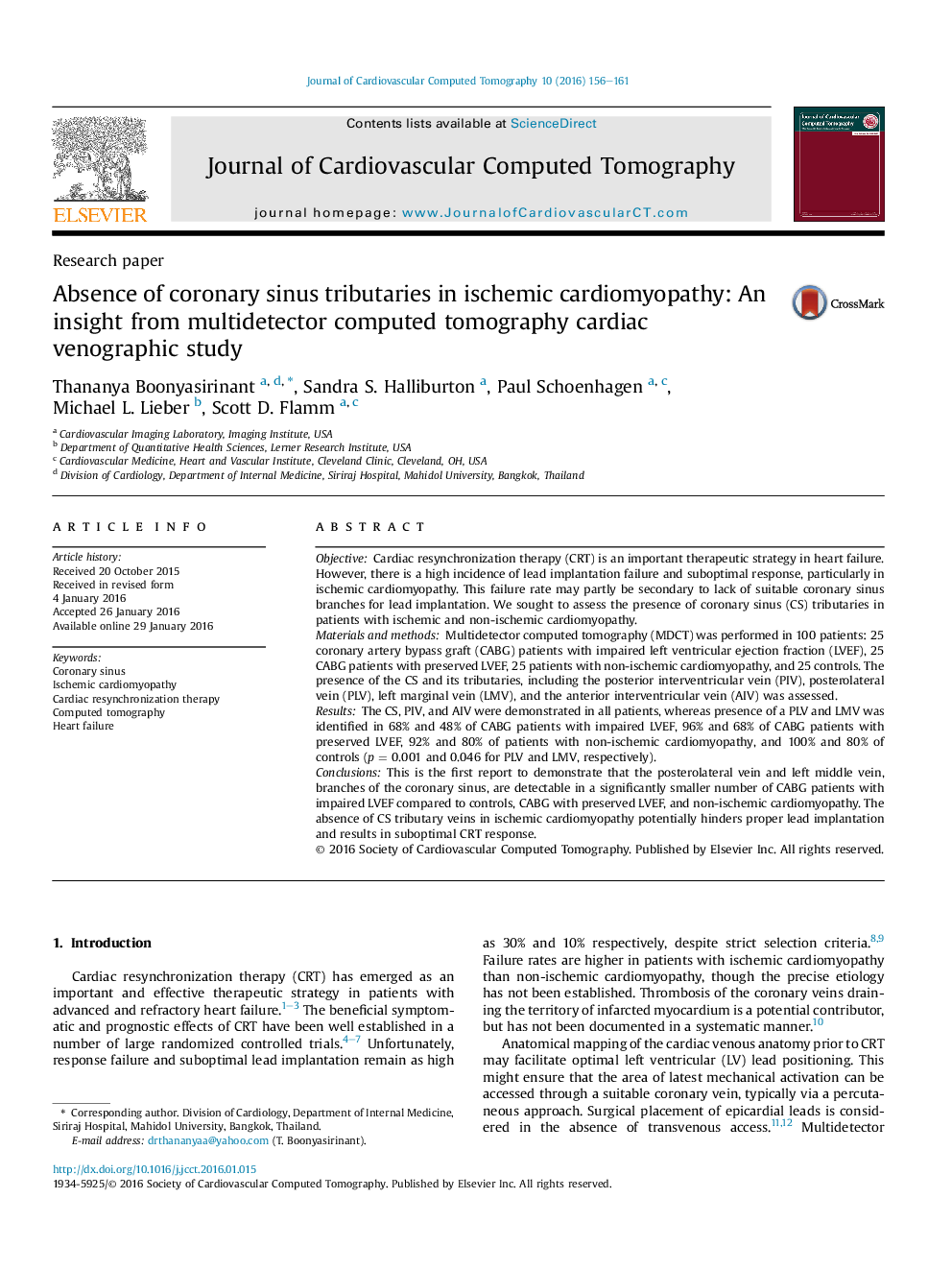| Article ID | Journal | Published Year | Pages | File Type |
|---|---|---|---|---|
| 2964372 | Journal of Cardiovascular Computed Tomography | 2016 | 6 Pages |
•Multidetector computed tomography (MDCT) could demonstrate coronary sinus (CS) tributaries in several studies, nevertheless none has been focused on its tributaries between patients with ischemic cardiomyopathy compared to non-ischemic cardiomyopathy or controls.•This is the first to demonstrate the significantly diminished posterolateral vein (PLV) and left marginal vein (LMV) in coronary artery bypass graft (CABG) with impaired left ventricular ejection fraction (LVEF) compared to controls, CABG with preserved LVEF, and non-ischemic cardiomyopathy.•The absence of CS tributary veins in ischemic cardiomyopathy potentially hinders proper lead implantation and results in suboptimal cardiac resynchronization therapy (CRT) response.•MDCT is a potential screening tool for CS tributaries as an aid for lead implantation in CRT.
ObjectiveCardiac resynchronization therapy (CRT) is an important therapeutic strategy in heart failure. However, there is a high incidence of lead implantation failure and suboptimal response, particularly in ischemic cardiomyopathy. This failure rate may partly be secondary to lack of suitable coronary sinus branches for lead implantation. We sought to assess the presence of coronary sinus (CS) tributaries in patients with ischemic and non-ischemic cardiomyopathy.Materials and methodsMultidetector computed tomography (MDCT) was performed in 100 patients: 25 coronary artery bypass graft (CABG) patients with impaired left ventricular ejection fraction (LVEF), 25 CABG patients with preserved LVEF, 25 patients with non-ischemic cardiomyopathy, and 25 controls. The presence of the CS and its tributaries, including the posterior interventricular vein (PIV), posterolateral vein (PLV), left marginal vein (LMV), and the anterior interventricular vein (AIV) was assessed.ResultsThe CS, PIV, and AIV were demonstrated in all patients, whereas presence of a PLV and LMV was identified in 68% and 48% of CABG patients with impaired LVEF, 96% and 68% of CABG patients with preserved LVEF, 92% and 80% of patients with non-ischemic cardiomyopathy, and 100% and 80% of controls (p = 0.001 and 0.046 for PLV and LMV, respectively).ConclusionsThis is the first report to demonstrate that the posterolateral vein and left middle vein, branches of the coronary sinus, are detectable in a significantly smaller number of CABG patients with impaired LVEF compared to controls, CABG with preserved LVEF, and non-ischemic cardiomyopathy. The absence of CS tributary veins in ischemic cardiomyopathy potentially hinders proper lead implantation and results in suboptimal CRT response.
